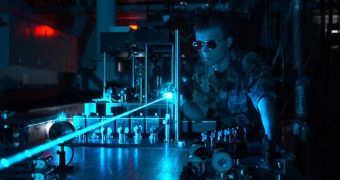Observing the Sun could lead to the discovery of hidden photons, astrophysicists say. These are elementary particles that are the result of dark matter interacting with the regular stuff. Experts are convinced they will find these photons soon.
While looking at the Universe, astrophysicists figured out a relatively simple thing, and namely the fact that there wasn't enough matter in the entire Cosmos to account for the massive gravitational pulls keeping galaxies together.
The concept of dark matter was developed as a response. Scientists proposed that the stuff may in fact make up about 23 percent of the mass-energy density of the observable Universe, with 4 percent being made out of normal matter and 73 percent accounted for by dark energy.
After the theoretical background was developed, the issue became how to find dark matter. A large number of detectors were built, but in space and on the ground, but with little results.
Now, astrophysicists turn their attention to these hidden photons, which they believe may turn out to be an easier way of finding tell-tale signs of the elusive form of matter.
The idea stemmed from computer models meant to simulate the behavior of a Universe that contains dark matter. Results revealed that dark matter particles must be interacting among themselves.
But the interesting part was that these interactions took place mediated by a photon-like particle, which is precisely the hidden photon astrophysicists currently want to identify, Technology Review reports.
While detecting these particles themselves may prove to be extremely difficult, experts say that there is another way that their effects could be distinguished, perhaps in the influences they have on regular light particles.
According to theories in quantum mechanics, it could be possible to observe instances in which photons become hidden, and hidden particles turn into photons. With enough patience, such an event can arguably be recorded in a scientific manner.
A German research team from the Max Planck-Institute fur Physik in Munich, led by Davide Cadamuro and Javier Redondo, is now proposing the creation of experimental setups in which scientists look at the Sun to discover these hidden photons.
Groups such as the solar hidden photon search (SHIPS) at Hamburg Observatory, also in Germany, have already began investigating the issue in this manner.
No one expects this to be easy, but scientists are hopeful that they will soon become able to demonstrate the existence of dark matter.

 14 DAY TRIAL //
14 DAY TRIAL //